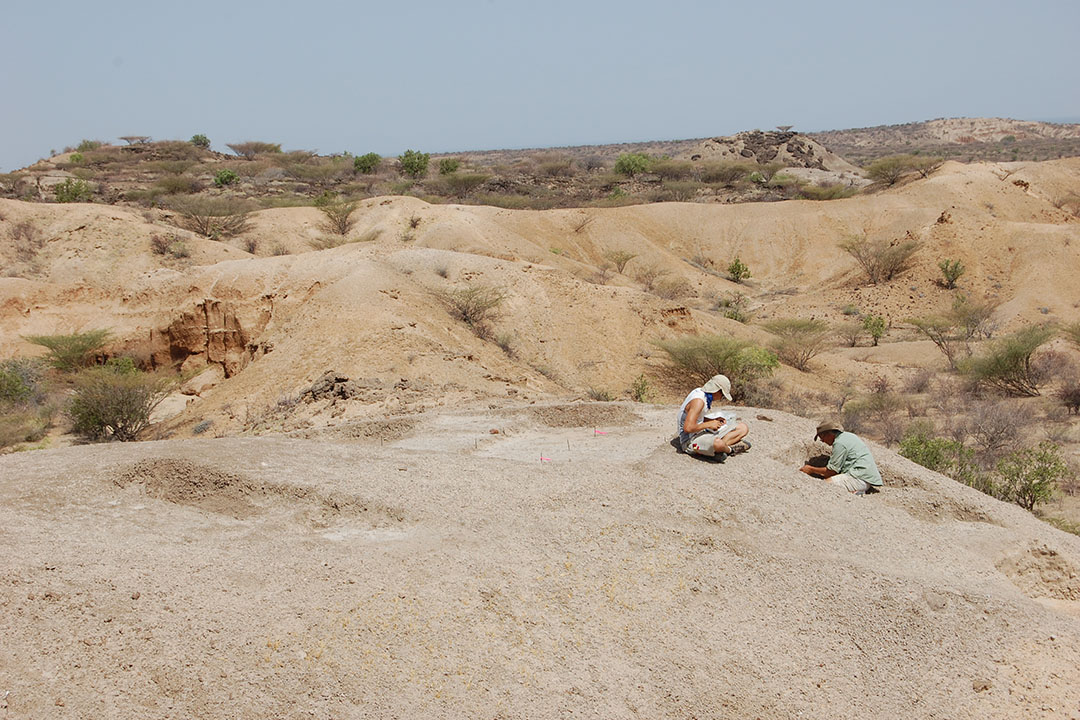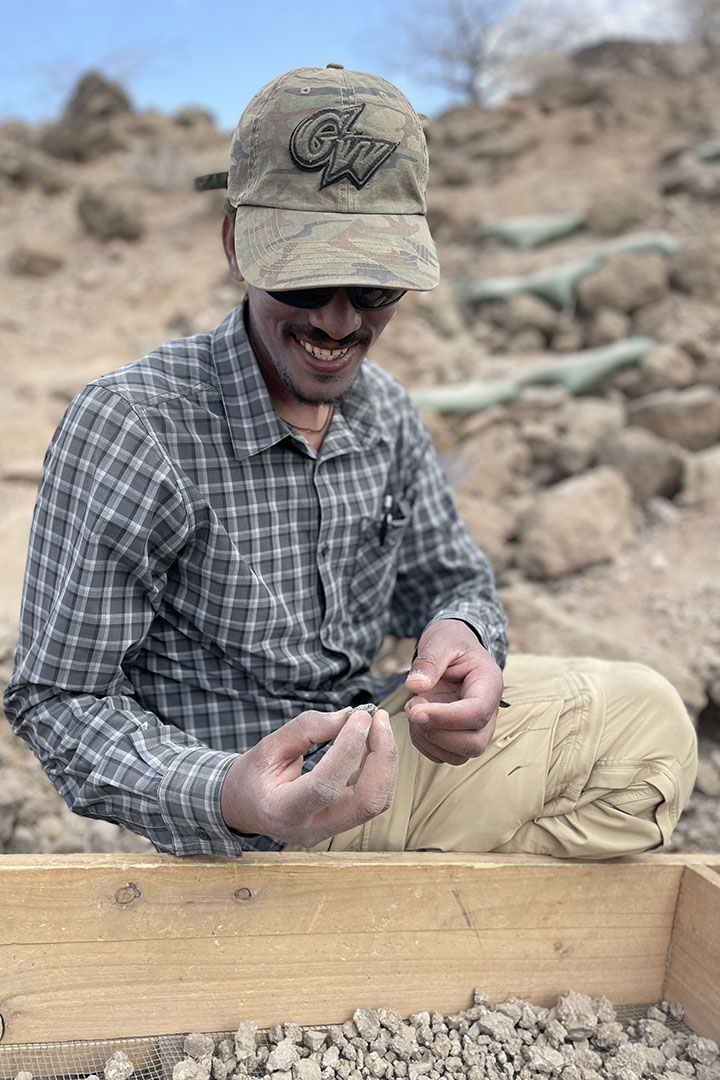Imagine early humans meticulously crafting stone tools for nearly 300,000 years—all while contending with wildfires, droughts and dramatic environmental shifts.
That’s the exact scene an international research team led by George Washington University faculty, students and postdocs reconstructed at an archaeological site called Namorotukunan in Kenya’s Turkana Basin.
In a new study published in the journal “Nature Communications,” the researchers described uncovering one of the oldest and longest intervals of Oldowan stone tools—a major milestone in human evolutionary history—dating from approximately 2.75 to 2.44 million years ago.
These artifacts demonstrate that our ancestors not only survived but also thrived throughout an environmentally volatile period in Earth’s history when Namorotukunan and the surrounding area was transformed from a lush, fertile floodplain into a dry, arid environment.
“This site reveals an extraordinary story of behavioral flexibility and cultural continuity,” said David R. Braun, professor of anthropology at GW’s Columbian College of Arts and Sciences and the lead author on the study. “What we’re seeing isn’t a one-off innovation. It’s a long-standing technological tradition.”

The study, “Early Oldowan technology thrived during Pliocene environmental change in the Turkana Basin, Kenya,” brings to light evidence of an enduring technological achievement and provides a rare geological lens into a changing Earth—one where a reshaped landscape influenced hominin habits and behaviors. The evidence of tool making at the 2.75 million-year-old Namorotukunan site reveals that early humans adapted their technology through the environmental upheaval. According to the researchers, this discovery opens the door to further research on the connection between climate change and human innovation.
“Despite these environmental challenges, early human ancestors were able to survive using their tool-making tradition, perhaps revealing the roots of one of humankind’s oldest habits: using technology to steady ourselves against change,” said corresponding author Dan V. Palcu Rolier, a geoscientist at Utrecht University.
The research, a collaborative effort with the National Museums of Kenya and an international team of scientists, was aided by students at the Koobi Fora Field School, which offers on-the-ground paleoanthropology training experiences. “It was field school students who found the first tools, and it’s been field school students that have excavated the sites for years,” Braun said.
Mastery over millennia
Early hominins engineered sharp-edged stone tools with extraordinary consistency, showing advanced skill and knowledge passed down across countless generations—a steady legacy. The study revealed “three overlapping horizons,” said GW postdoctoral scientist Niguss Baraki, Ph.D. ’25, of tool-making in the region—at 2.7 million years, 2.58 million and 2.44—that all involve similar technology.

“Despite a 300,000-year time window—and even as the environment shifts dramatically—early humans were making these tools and their technology for making them remained the same,” noted Baraki, one of several GW researchers among the study’s authors including Joanne Munga, M.Phil. ’23, Ph.D. ’24, and Kristen Tuosto, M.Phil. ’23, Ph.D. ’25.
These toolmakers lived through radical environmental transformation, as lush vegetation-rich fields turned into dry bushlands. Braun theorized that adaptable technology may have unlocked new diets, including meat and marrow, turning hardship into a survival advantage.
“The development and appearance of early technology is a lot more complex than we thought,” Braun said.
The decade-long research involved cutting-edge techniques, including volcanic ash dating, magnetic signals frozen in ancient sediments and microscopic plant remains.
The fieldwork was carried out under the guidance of the National Museums of Kenya and with the support of the Daasanach and Ileret communities. It was funded by the National Science Foundation.


